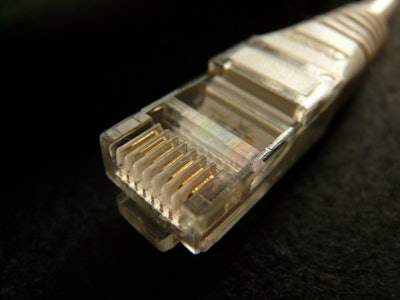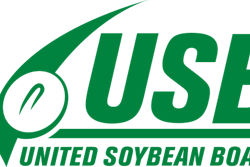
The COVID-19 pandemic has highlighted the need for high-speed internet. These days, for many, it’s the foundation of work, school and even doctor visits.
But what if you don’t have access to high-speed internet? The Eighth Broadband Progress Report from the Federal Communications Commission (FCC) notes that approximately 19 million Americans — 6% of the U.S. population — still lack access to fixed broadband services. In rural areas, nearly one-fourth of the population — 14.5 million people — lack access to service.
“Most grain elevator and feed mill facilities are located in rural areas, where it is often difficult to find access to reliable, affordable high-speed internet,” says Sarah Gonzalez, director of communications and digital media with the National Grain and Feed Association (NGFA). “The lack of connectivity means these facilities may not have access to market information throughout the day.
“While employees or business operators may start the day at a location with internet connectivity, the site of the facility is without access,” she continues. “There also are large areas in rural America with no connection at all, which creates a total digital imbalance for any businesses operating within that unconnected area.”
The issue
During the pandemic, a dramatic digital shift occurred as everyday activities moved online — leaving rural residents unable to keep up.
According to Gonzalez, rural connectivity for NGFA member companies has become more important with the onset of the COVID-19 pandemic and more employees working from their homes and schooling their children at home.
But this isn’t just about covering digital needs during the pandemic. According to the U.S. Department of Agriculture, 25% of U.S. farms have no access to the internet. The United Soybean Board found 60% of U.S. farmers lack sufficient connectivity to run their businesses, while many also indicate they would like to incorporate more technology to improve their operations.
Land O’Lakes, Arden Hills, MN, is one agribusiness with deep connections to rural America. As one of the nation’s largest farmer-owned cooperatives, it sees firsthand how the digital divide (those that have high-speed internet access or broadband, and those that don’t) hits rural communities.
Beth Ford, president and CEO of Land O’Lakes, Inc., says the urban-rural technology divide is stifling innovation in rural communities and preventing farmers from adopting new technologies that can improve production and lessen their environmental impact.
Land O’Lakes and its cooperative network recently announced an effort to tackle the lack of rural broadband access and are calling on state and federal policymakers to help with long-term solutions to this issue.
Coalition comes together
Nearly 100 organizations, spanning multiple industries, have joined forces as part of a new coalition dedicated to helping close America’s digital divide.
Headed by Land O’Lakes, Inc., the newly formed American Connection Project Broadband Coalition (ACPBC) will advocate for public and private sector investment to bring high-speed internet infrastructure to rural areas.
The coalition is also advocating for policies and contributing their own resources to facilitate remote education, health and mental health services, job opportunities and more, with the goal of connecting all American communities through access to modern digital technology. ACPBC is continually adding members who share a desire to connect the country.
“All too often, farmers, business owners and even school children are disadvantaged by being on the wrong side of our country’s digital divide, a problem that has become more acute as we deal with the challenges of COVID-19,” says Ford.
“But this isn’t just a rural issue,” she says. “ACPBC represents a mix of companies from tech, health care, agriculture and more who understand the ramifications of our country’s broken internet infrastructure and who have the willingness and expertise to help address this need.”
Currently, the ACPBC is made up of businesses, trade associations, non-profits, municipalities and academic institutions. In addition, ACPBC works with organizations like The Business Roundtable and individual political leaders to jointly advance its efforts in this area.
Gonzalez says NGFA is part of the ACPBC. In conjunction with the launch of ACPBC, she says the coalition sent a letter to President Trump and congressional leadership urging them to “enact groundbreaking broadband connectivity legislation that includes the necessary resources to close the digital divide in this country.”
The FCC estimated in 2017 that it would cost $80 billion to bring high-speed internet to remaining parts of the country that do not have access, while a more recent U.S. Department of Agriculture report estimated it would require “between $130 and $150 billion over the next five to seven years, to adequately support rural coverage and 5G wireless densification.”
A study from the U.S. Chamber of Commerce’s Technology Engagement Center, however, has found that “better adoption of online tools and digital services by businesses outside metropolitan areas could create 360,000 new full-time jobs in rural areas and add more than $140 billion to the U.S. economy over the next three years.”
In the letter, ACPBC added, “As we look to help our nation recover from this global pandemic, let’s make a smart investment in the future competitiveness of this country and ensure that all Americans, in both rural and urban areas, are able to access the internet.”
Other advocacy measures
ACPBC member companies have collaborated in various ways to help with connectivity issues.
Throughout the COVID-19 pandemic, Land O’Lakes and other partners have established free guest Wi-Fi access points outside Land O’Lakes’ business locations in more than 150 communities.
Microsoft donated hotspot boosters to further the reach of the guest Wi-Fi, so that area residents could safely conduct business, communicate with family and friends, and carry out other daily activities online while staying socially distanced in their cars.
In April, ACPBC sent a letter to all 50 U.S. governors, asking for their support of the initiative and inviting them to leverage their own resources to add more Wi-Fi hotspot locations around their states.
In addition, ACPBC urged the support of robust state
and federal infrastructure investments to solve rural internet connectivity challenges.
The coalition plans to expand its membership and continue its advocacy work in the coming months.
Many of the members have taken steps individually through donating funds and equipment, and part of the group’s activity will be to identify new ways to work together to maximize the reach of these actions and fill needs that have not previously been met.
“If there were a time to band together with and for our rural neighbors -– now is that time,” says Ford. “I encourage businesses with footprints in rural communities to join us in these actions to connect our rural communities, and I strongly urge state and federal policymakers to join us in fixing the problem by closing the digital divide in rural America.” ■
HOW YOU CAN HELP
- Based on estimates, Land O’Lakes believes bridging the digital divide will cost a national investment of $100 billion. Tell your representatives in Congress that the question isn’t how we can afford this, but how we can afford not to bring connection to America’s rural areas.
- Use the TestIT app to give policymakers a more accurate understanding of broadband gaps. You can find it here.
- If you’re a business located in a rural area, consider opening your guest Wi-Fi to neighbors who may not have access.



















